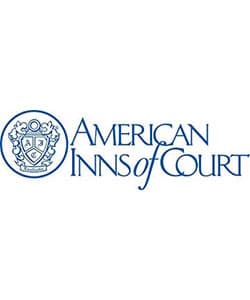Negligent driving is a serious issue that can lead to severe accidents and significant personal injuries. Understanding what constitutes negligent driving and how it can form the basis for a personal injury claim is essential for anyone involved in a car accident. This page aims to provide comprehensive information on the topic, with a focus on the state of Idaho.
Defining Negligent Driving
Negligent driving occurs when a driver fails to exercise reasonable care while operating a vehicle, resulting in an accident or injury. This lack of care can manifest in various ways, such as speeding, distracted driving, disobeying traffic laws, or driving under the influence of alcohol or drugs. When a negligent driver causes harm, they can be held liable for the resulting damages through a personal injury claim. The concept of negligent driving encompasses various behaviors that demonstrate a disregard for the safety of others. Each of these behaviors increases the risk of accidents and potential injuries. For instance, a driver who speeds excessively is not only breaking the law but also putting themselves and others in danger due to reduced reaction time and increased stopping distance. Similarly, distracted driving, whether due to mobile phone use, eating, or any other activity that diverts attention from the road, can result in delayed responses to changing traffic conditions and unexpected hazards.
Legal Framework for Personal Injury Claims
In Idaho, like in many other states, the legal framework for personal injury claims are built on the concept of negligence. This framework requires proving certain elements to establish a driver’s liability for an accident. These elements include duty of care, breach of duty, causation, and damages. Proving negligence involves demonstrating that the driver owed a duty of care to others on the road, that this duty was breached through their careless actions, that this breach directly caused the accident, and that the accident resulted in actual damages. This structured approach ensures that only those who can establish these elements can hold the negligent party accountable, thereby providing a fair mechanism for determining liability.
Duty of Care
Every driver has a legal duty to operate their vehicle safely and responsibly to prevent harm to others on the road. This duty encompasses following traffic laws, adhering to speed limits, and avoiding behaviors that could endanger others. The duty of care is a fundamental principle in personal injury law, serving as the baseline expectation for all drivers. This duty is not limited to specific actions but covers a wide range of driving behaviors. For instance, obeying traffic signals, yielding the right of way, and maintaining a safe distance from other vehicles are all part of this duty. By adhering to these rules, drivers contribute to a safer driving environment, reducing the likelihood of accidents.
Breach of Duty
When a driver fails to meet this standard of care, they breach their duty. Common examples of such breaches include texting while driving, running red lights, and engaging in reckless driving behaviors like aggressive driving or tailgating. A breach of duty occurs when a driver’s actions fall below the standard expected of a reasonably prudent person in similar circumstances. For example, a driver who chooses to speed in adverse weather conditions not only endangers themselves but also others on the road. Similarly, a driver who is distracted by their phone is not giving their full attention to the task of driving, significantly increasing the risk of an accident. Each of these actions represents a clear deviation from the expected standard of care, thereby constituting a breach.
Causation
To hold a negligent driver accountable, it must be shown that their breach of duty directly caused the accident and resulting injuries. This causation element is crucial; it must be clear that negligent actions were a direct and proximate cause of the harm suffered. For instance, if a driver runs a stop sign and crashes into another vehicle, the act of running the stop sign must be proven as the direct cause of the collision. Establishing causation involves linking the negligent actions of the driver to the injuries sustained by the victim. This often requires a thorough investigation of the accident, including analyzing evidence such as traffic camera footage, eyewitness testimony, and analysis. By demonstrating this causal link, the injured party can establish the driver’s liability for the accident and the resulting damages.
Damages
Finally, the injured party must demonstrate actual damages resulting from the accident. These damages can be varied and include physical injuries, property damage, medical expenses, lost wages, and pain and suffering. It’s not enough to show that the negligent driver breached their duty of care; there must be tangible losses to pursue a personal injury claim successfully. Damages serve to compensate the injured party for the losses they have incurred due to the accident. These losses can be both economic, such as medical bills and lost wages, and non-economic, such as pain and suffering. By quantifying these damages, the injured party can seek appropriate compensation from the negligent driver, thereby providing a means of financial recovery and support during their rehabilitation.
Types of Negligent Driving
Negligent driving can take many forms. Some of the most prevalent types include:
Impaired Driving
Driving under the influence of alcohol, drugs, or other substances impairs a driver’s ability to operate a vehicle safely. This impairment slows reaction times, impairs judgment, and increases the likelihood of an accident. Impaired driving is particularly dangerous because it affects the driver’s ability to make sound decisions and respond to changing road conditions. This form of negligent driving not only puts the driver at risk but also endangers everyone else on the road. Law enforcement agencies in Idaho take impaired driving very seriously, with strict penalties for those caught driving under the influence. Despite these measures, impaired driving remains a significant cause of accidents and injuries.
Rules of a Personal Injury Claim Choosing a Personal Injury AttorneyRelated Videos
Distracted Driving
Distracted driving is another major cause of accidents. This can involve activities such as texting, talking on the phone, eating, adjusting the radio, or any behavior that takes attention away from the road. Even a momentary distraction can have catastrophic consequences. The prevalence of mobile devices has exacerbated the issue of distracted driving, with many drivers unable to resist the urge to check their phones while driving. This behavior is incredibly dangerous as it diverts attention from the road and reduces reaction times. Efforts to combat distracted driving include public awareness campaigns and stricter enforcement of laws prohibiting the use of handheld devices while driving.
Speeding
Speeding is a common form of negligent driving. Exceeding posted speed limits or driving too fast for road conditions reduces the driver’s ability to react to sudden changes and increases the severity of accidents. Speeding is particularly dangerous because it not only increases the likelihood of an accident but also the severity of the injuries sustained. Higher speeds result in greater impact forces during a collision, leading to more serious injuries and greater damage to vehicles. Despite the known risks, speeding remains a prevalent issue on Idaho’s roads. Law enforcement agencies continue to enforce speed limits strictly, but drivers must also take personal responsibility for adhering to these limits and driving safely.
Reckless Driving
Reckless driving encompasses a range of dangerous behaviors, including aggressive driving, tailgating, and road rage. Such actions show a blatant disregard for the safety of others and significantly heighten the risk of collisions. Reckless driving is characterized by a willful and wanton disregard for the rules of the road and the safety of others. This behavior often involves multiple traffic violations and aggressive maneuvers, such as weaving in and out of traffic, speeding excessively, and tailgating other vehicles. Reckless drivers pose a significant threat to everyone on the road and are often held accountable for their actions through strict legal penalties and personal injury claims.
Verdicts & Settlements
Failure to Obey Traffic Laws
Failure to obey traffic laws — such as ignoring traffic signals, not yielding the right of way, and failing to stop at stop signs — can also constitute negligent driving. These actions disrupt the flow of traffic and create hazardous situations. Adherence to traffic laws is fundamental to maintaining order and safety on the roads. When drivers choose to disregard these laws, they create unpredictable and dangerous situations that can lead to accidents. For example, failing to yield the right of way at an intersection can result in a serious collision with another vehicle. Traffic laws are designed to protect all road users, and failing to obey these laws is a clear example of negligent driving.
Filing a Personal Injury Claim
If you are injured due to another driver’s negligence, you have the right to seek compensation through a personal injury claim. This compensation can cover a wide range of damages, including medical bills, rehabilitation costs, property damage, lost wages due to time off work, and non-economic damages like pain and suffering. The process of filing a personal injury claim involves several steps, including gathering evidence, negotiating with insurance companies, and, if necessary, pursuing litigation. Filing a personal injury claim can be a complex and challenging process. It requires a thorough understanding of the legal system, as well as the ability to gather and present evidence effectively. Working with a personal injury attorney can significantly increase your chances of a successful outcome. An attorney can guide you through each step of the process, from filing the initial claim to negotiating a settlement or presenting your case in court. By seeking legal representation, you can ensure that your rights are protected and that you receive the compensation you deserve.
Getting Justice for Idahoans on the Road
If you have been injured by a negligent driver, do not hesitate to reach out to Hepworth Holzer, LLP. Our team is ready to evaluate your case, provide legal advice, and work tirelessly to secure the compensation you deserve. Contact us today to schedule a consultation and take the first step toward recovery and justice.
You do not have to navigate this difficult time alone; our attorneys are here to help you understand your rights and options. We are committed to fighting for your best interests and fighting for the full and fair compensation to which you are entitled.











